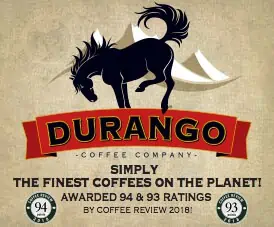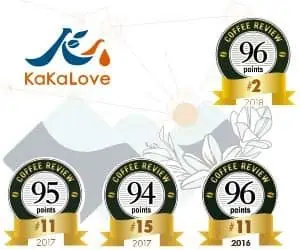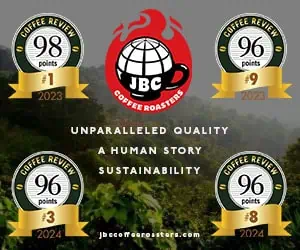- Milk. Milk is an increasingly popular coffee flavoring in the United States. The change may be partly owing to the contemporary tendency to brew stronger coffee, which stands up better to milk and sweetener than did the thin, under-flavored beverage drunk in America in the years before the advent of specialty coffee. All of the great rich, full-bodied coffees of the world, brewed correctly, carry their flavor through nearly any reasonable amount of milk. And a great, rich, full-bodied coffee brought to a moderately dark roast (not a thin, burned French roast) will carry through milk even better. Too much milk, of course, cools the coffee, unless you heat it or, better yet, heat it and froth it with the steam want of an espresso machine. As everyone knows, milk heated conventionally tends to congeal unpleasantly, an aesthetic turn-off avoided by heating and frothing the milk with steam. Anyone who enjoys milk in coffee might consider purchasing an inexpensive countertop espresso machine simply to froth and heat milk.
- Sugar and Sweeteners. The debate over sugar in coffee has raged almost as long as the caffeine controversy, though with considerably less rancor. The inhabitants of the Arabian peninsula, the first recorded coffee drinkers, apparently drank their coffee black and unsweetened, adding only spices. The Egyptians are given credit for having first added sugar to coffee, around 1625, and for having devised the traditional Middle Eastern mode of coffee brewing, in which powdered coffee is brought to a boil together with sugar to produce a sweet, syrupy beverage. The dairy-shy Egyptians still did not think to add milk to their sweetened coffee, however. Although the Dutch ambassador to China first experimented with milk in his coffee in 1660, this innovation did not become widely accepted until Franz George Kolschitzky opened the first Viennese café in 1684 and lured his new customers away from their beer and wine by adding both milk and honey to strained coffee. Now that granulated sugar is a dietary villain in many circles, people who like to sweeten coffee resort to a variety of alternatives. Artificial sweeteners using saccharine like Sweet’n Low are unsatisfactory; coffee exaggerates their flat, metallic flavor. Aspartame-based sweeteners like Equal resonate with coffee much better, although the aftertaste still may be a touch tinny. To my palate, honey fades away in coffee, but the molasses in dark brown and raw or Demerara sugars actually reinforces the rich, dark tones of coffee flavor. You are still consuming sugar, but you are adding some iron and B vitamins. The Japanese recognize the flavor symbiosis of raw sugar and coffee by calling the former coffee sugar.
The World's Leading Coffee Guide










